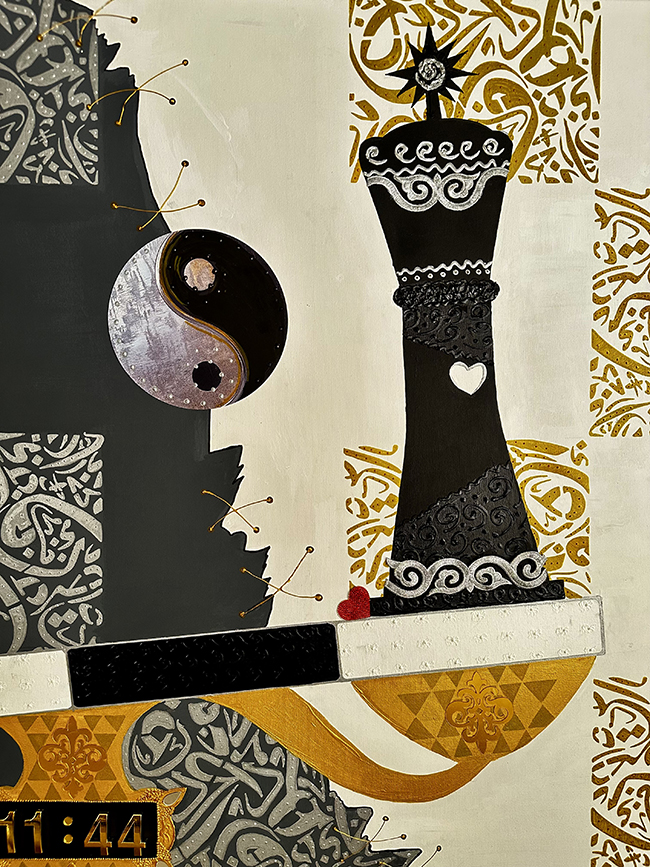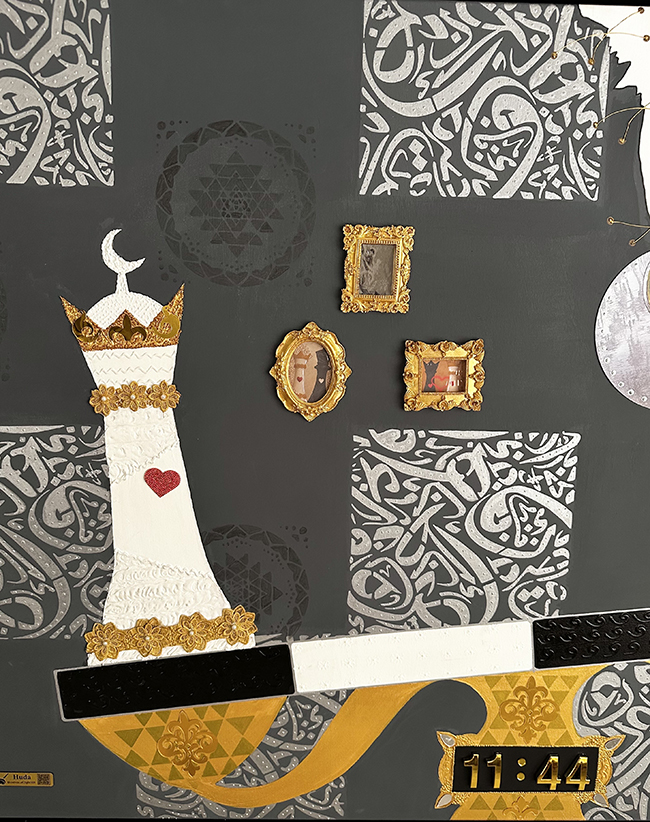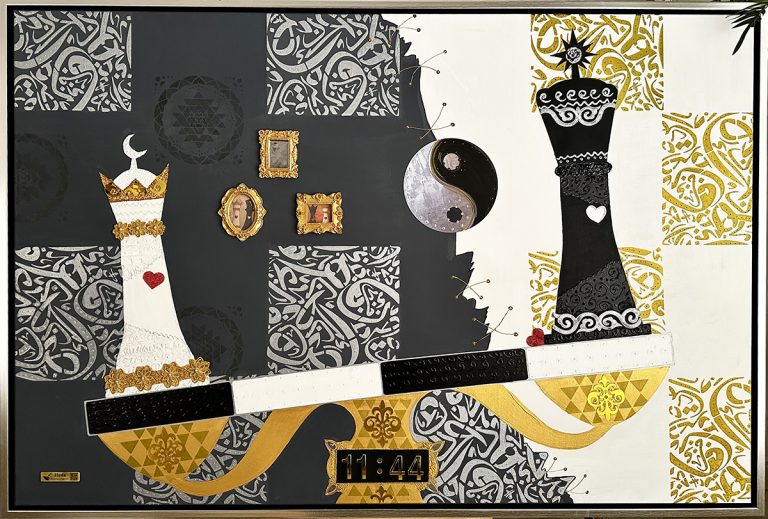Queen Huda paints with instinct rather than instruction. She didn’t go to art school. She doesn’t follow rules about line, color theory, or form. Instead, she leans into what feels true. Her paintings come from somewhere beyond logic—rooted in mysticism, shaped by nature, filtered through imagination.

Though she describes herself as self-taught, it might be more accurate to say she’s teaching herself to see differently. Her work isn’t concerned with copying the world. It reflects something else—something deeper and slightly out of reach. A mix of dream and memory. Her pieces often carry a sense of ritual, as if something sacred is unfolding. Myth and symbolism show up again and again, not in a literal way, but as energy. Her paintings don’t ask for interpretation so much as presence. You sit with them. You feel your way through. Like all intuitive work, it reveals something just beneath the surface—if you’re willing to look.

“Mirrors of the Soul” is a large-scale piece measuring 150 by 100 centimeters. Painted in acrylics and layered with paste and fabric, the work pulls you in immediately—not because it shouts, but because it holds something. You feel it before you understand it.
Two kings stand on either side of the canvas. One in light, one in shadow. They’re separated by space, but connected by a golden path running between them. It’s not just a bridge—it’s a thread of balance. Both hold hearts, though only one seems fully aware of its weight. The king on the light side stands open, his crown seeming to rest lightly on his head. The other is different. He holds a heavy head, symbolic of inflated ego, and his heart space remains hollow. He’s crowned, yes—but disconnected. The contrast between the two isn’t framed as good vs. evil. It’s more subtle than that. It’s a conversation between awareness and absence.
Between them hang objects—symbols that seem to hover in air. They could be memories, timelines, fragments of past lives. The number 11:44 appears, a detail that might be easy to overlook but feels loaded. It suggests awakening. Not just in a spiritual sense, but as a moment when the ordinary shifts into something more. A point where recognition happens.
At the bottom of the canvas sits a golden scale. It’s not centered. It tips slightly—to the queen’s side. She isn’t pictured in full, but her presence is implied. She carries the intuitive wisdom of the divine feminine, anchoring the piece with heart and inner knowing. It’s not dominance. It’s grounding. Her side of the scale holds weight not through force, but through trust.
What’s interesting is that this isn’t a love story. Or at least not in the typical sense. The piece doesn’t imply that these two kings are opposites meant to complete each other. Instead, they’re mirrors. Their growth is internal first. The reunion is sacred because it’s earned—not handed over. They must become whole on their own, then rise together.
The use of materials adds to this layered meaning. Fabric scraps and textured paste give the work a tactile quality. It’s not flat. It has scars and folds. You can see where something was added, moved, or left rough. That sense of imperfection feels right. The message here isn’t about polishing reality—it’s about revealing what’s beneath it.
Queen Huda’s work rarely fits into a clean category. “Mirrors of the Soul” isn’t traditional portraiture or pure abstraction. It sits in between. Spiritual, symbolic, emotional. Its quiet power comes from that in-betweenness. The duality of light and shadow. The stillness in tension. The softness inside strength.
And in that way, it reflects the artist herself. Huda isn’t trying to make perfect paintings. She’s trying to make honest ones. This piece is one of her clearest statements on the long journey inward, the difficulty of reflection, and the beauty of reunion—not with another, but with the self.
In her world, wholeness doesn’t come from symmetry. It comes from understanding both sides of who we are—and choosing to walk the path between them. Golden. Uneven. True.

